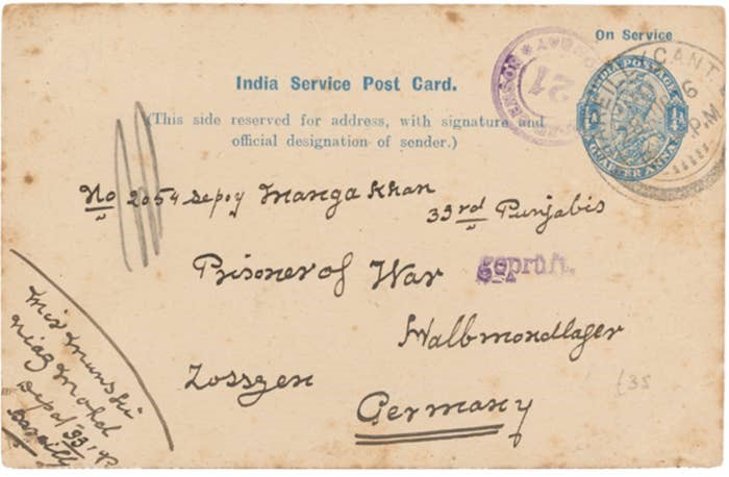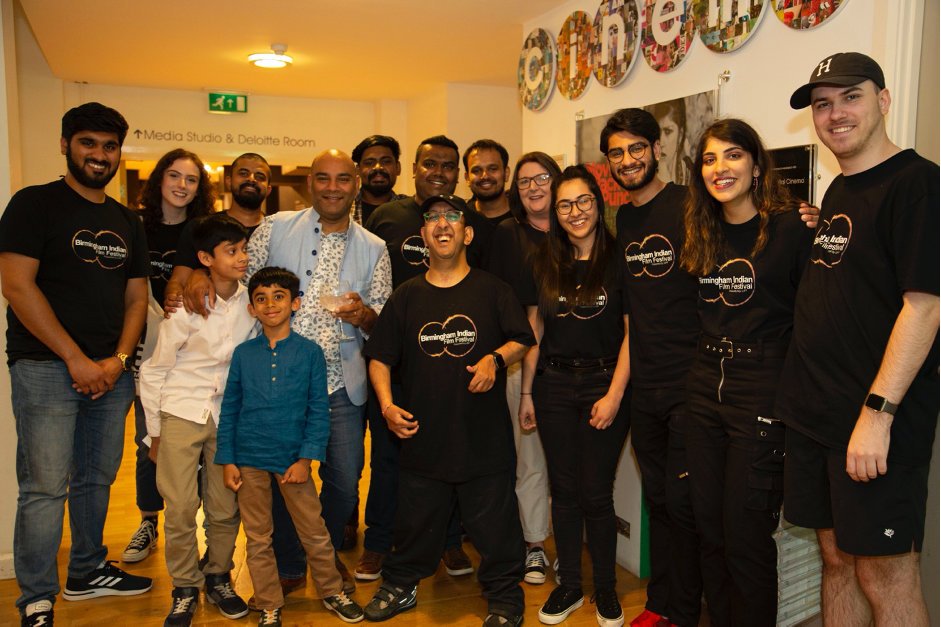Birmingham City University (BCU) is delighted to be a project partner with TCCE in its exciting new National Centre for Academic and Cultural Exchange. We’re looking forward to learning from the good practice of other institutions in their knowledge exchange and collaborative research initiatives, and to sharing some of our own experiences.
BCU’s Institute of Media and English (BIME) undertakes a wide range of research and practice-based projects which focus on diversity and representation. These are often collaborative activities where academics team-up with cultural organisations, and frequently involve students. The community outreach and impact of many of these endeavours is considerable. In this blog, we will outline just a few of our current projects.
Sir Lenny Henry Centre for Media Diversity – Professor Diane Kemp

We launched the Sir Lenny Henry Centre for Media Diversity from the School of Media at BCU in March 2020. Not an auspicious time to start a new project as everything else was shutting down and people were coming to terms with coronavirus and life during a pandemic.
But we felt that the issues the Centre wanted to tackle were, frankly, too important to put off.
The Centre consists of Sir Lenny Henry, senior lecturer Marverine Duffy, visiting Professor Marcus Ryder and myself (Prof Diane Kemp) as Director. We brought together some stellar support in a management board and agreed four lines of work to get us underway: qualitative research, quantitative (so we’d have the figures to make a case), work with industry and a new journal. This latter came from an initial approach by a friend and academic at Cardiff University, developed into an MOU between the universities and resulted in the first edition of Reprezentology being launched December 4th www.bcu.ac.uk/reprezentology-journal The journal, like the Centre, has the same ethos of valuing research by both academics and media practitioners. No one group holds the answers. Collaboration is our watchword. To that end the Centre has set up Practitioners Investigating Media Industry Diversity (PIMID) offering small grants for short turnaround research to media craftspeople, partnering them with an academic mentor for the duration. In the launch edition of Reprezentology you can see the results of that. We feature the work carried out by Emma Butt and Dr Ellie Tomsett into diversity in post-production sound roles.
The journal is written accessibly and is a free download. Again, the ethos of the Centre at work, if you want change to happen people need to be able to access information without barriers such as a paywall.
Some of our students have been involved in different aspects of this work, today running our Reprezentology Twitter account, for example. When the Centre first launched, a group of MAs took on the task of building a diversity timeline which is still up and being added to months later. We’ve also employed a PhD student to help with research and organisation on two small projects. The Centre’s collaborative ethos at work again.
Other projects which have involved our students, linking them with career professionals in the industry they’re hoping to join, are part of the ongoing relationship we have with news organisation HuffPost UK. We are the HuffPost School of Journalism. This was set up to explicitly support greater diversity in journalism (workforce and output) and our students have accessed a paid virtual placement this year, multiple guest lectures, visits to the London newsroom in a previous year and contact with senior journalists. This year we started The Heads Up, a weekly newsletter which students take turns editing. Part of this requires that they liaise with the UK editor of HuffPost.
This year we have also started getting our MA data students conducting research for investigative stories which HuffPost is covering. This has meant them getting bylines on major stories – a real boost for their CVs.
Stories of Sacrifice – Dr Islam Issa
Coinciding with the recent World War One (WW1) commemorations, which risked a lack of diversity, my research has doubled the official estimate of Muslim soldiers who fought for the Allies during WW1. This has been particularly significant at a time of increasing Islamophobia, meaning that the research and resulting exhibition, Stories of Sacrifice, have been a catalyst for greater cross-cultural and cross-faith awareness and dialogue at local, national, and international levels. The research was commissioned by the British Muslim Heritage Centre and part-funded by the UK Army, and has led directly to the Armed Forces changing its Diversity and Inclusion strategies in the North West. The research has also contributed to Greater Manchester Police diversifying its recruitment practices while helping it to combat racial profiling following the 2017 Manchester bombing. The project has also been widely taken up in schools with lessons for Key Stage 3 and 4 incorporating the research being used by over a thousand students.
I was commissioned by The British Muslim Heritage Centre to help them research and curate the Stories of Sacrifice exhibition, which aimed to provide permanent free-to-access information for the public on the contribution of Muslim soldiers in WWI. The exhibition has toured the UK since 2016, and features previously unseen letters, photos and diary entries. It has featured widely on TV, radio and in newspaper articles, and has won several awards including a Times Higher Education Award and the Muslim News Awards’ ‘Excellence in Community Relations’.
The postcard below was uncovered in the research process; it was sent by a prisoner of war in Germany, Sepoy Manga Khan of the 33rd Punjabis.

Birmingham Indian Film Festival and Diwali – Dharmesh Rajput

BCU students with the BIFF team at the closing film. Photograph (Ritesh Batra) at Midlands Arts Centre, July 2019
I love it when different parts of my world collide and especially when they provide opportunities for students. As the Course Director of the BA Media Production at BIME, and externally as Head of Cinema for the Birmingham Indian Film Festival, I get involved in various arts and media projects especially with Sampad, South Asian Arts and Heritage, who I’ve been working with on various arts projects since 1997.
Birmingham Indian Film Festival (http://birminghamindianfilmfestival.co.uk) has been growing since its inception in 2015 and is a firm part of the city’s festival landscape – since it arrived, students from the University have been volunteering at the events. Over time, I have developed these opportunities for students to be able to utilise their skills better and now the Media students regularly work on social media promotion, photography, filming and supporting PR and red-carpet events, giving them valuable real world experience and placement opportunities for their CVs. This year has been challenging with the festival having to go online (https://www.loveliffathome.com/) due to COVID-19.
Everyone has had to be innovative in order to continue delivering their normal activity since March and going digital has provided new opportunities. The West Midlands Combined Authority, Mayor of the West Midlands and the Consulate General of India in Birmingham started Diwali on the Square in Victoria Square 3 years ago. I have been hosting it with Jaya Khazeai, a classical dancer and dance teacher since it started and the event is curated by Sampad South Asian Arts and Heritage. This year the celebrations went online and were presented on screen - two novice presenters working in a multicamera studio with autocue for the first time delivering an introduction to the Hindu story of Diwali, the significance of each of the five days as well as the importance of the festival to Sikhs and Jains. It was a great opportunity for final year Media Production students and nine of them got involved, with support from Senior Technicians, Dan Whitehouse and Tobie Lang. They filmed all the presenter links and the various pieces of content were then pulled together and edited at Bill Media, based in Handsworth, Birmingham. I’m really proud of all of the students and their work, they did a great job at short notice under pressure working in a Covid safe way. They were all credited on the video has had nearly thirteen thousand views. You can watch it at https://www.youtube.com/watch?v=jaTmDlCS0-Q (approx. 90mins)
Still celebrating Diwali, I was the executive producer for a production for Sampad South Asian Arts & Heritage who also curated a selection of international singers and dancers for a digital concert for the University of Birmingham India Institute, hosted by local artists including me (again!) with my thirteen year old son filming a piece to camera (he was very pleased with his on screen credit!) and 2nd year Media Production student, Jan Adamic, who edited it all together, provided captions, subtitles and digital on screen graphics; and once again getting an on screen credit. He worked professionally and efficiently and did the school proud! The film is a joyous celebration and has had over thirteen thousand views on the University of Birmingham Facebook page and is also available on various You Tube platforms. You can watch it https://www.youtube.com/watch?v=jGLP6MXgzrY (approx. 50mins)
The work of our students has been recognised and further collaborations with Sampad are in progress – which is great news for our students, our school, the university and the city!
